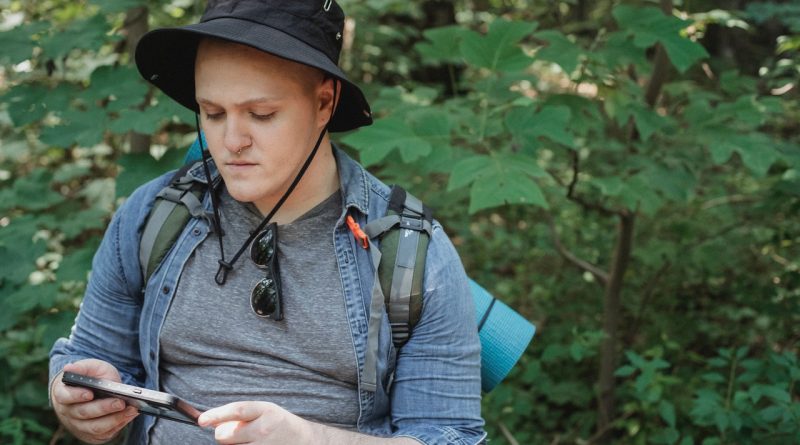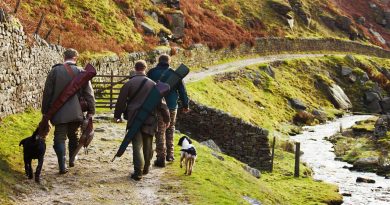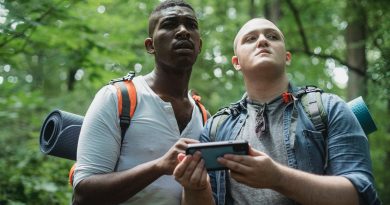How To Navigate In The Woods
If you’re keen on getting onto some tough terrain for game, losing your way could be easy, particularly for newbies. But it’s nothing to be bothered about when you came prepared.
You don’t have to bank on space age gadgets to navigate the woods every time. Don’t make your journey through nature seem all futuristic.
But don’t forsake tech for finding your way. Just don’t make it your only method of locating the right path.
In this guide, I’m going to be showing you everything you need to explore trails you would’ve never dared. Feeling confident is a major ingredient for finding your way. But there’s more stuff you may not know already.
Above all, know that your mind is a major tool regardless of how far you’ve left the main trail. You can draw several navigation techniques from it, when you’ve trained it right. And with the info in this guide, you’ll have no trouble wandering into deep forests and back without hassles.
The Right Tool For The Right (Navigation) Job
When you’re not all up for GPS and advanced navigation tools (even if they’re handy), going old-fashioned isn’t bad. Consider, no, make sure you take the following with you on your next camping trip outdoors:
- Long ribbons with different colors (for tying around trees you passed on your way into the wild)
- A roll of tissue and compass (ideal navigation tools, old-school style)
- A map showing topological patterns of the entire area you plan to camp in
- Trail markers (ideal for marking where you’ve passed and easily returning to those spots)
Also, it could be essential to consider using:
- Sticks and large boulders or small rocks to mark your path (whatever works for you)
- Guide book on trail marking from the National Wildlife Federation
How To Never Get Lost In The Woods
There’s some work involved if you plan to never get lost in unspoiled natural terrain. One thing is certain – walking into the woods without a plan is an unwise move. Before planning your sojourn into the wild, consider mapping out your exit plan.
Just as we said above, your navigation strategy doesn’t have to be space-age-esque, but it should work every time.
Let’s take it one step at a time:
Before Getting into the Woods
You’ve got to tell somebody
When you’re in natural territory, there’s a chance most modern means of communication may not work.
You need to inform someone you can trust where you’re heading to. Also, give this person (or people to be much safer) info on when you’ll return. It’s essential to go into specifics when giving out such information. Consider informing your family or confidante about:
- Major highways close to the trail
- Landmarks around the area
- Last grocery store, gas station, or any other easily-identifiable structure or natural formation
You need to study
Before informing people where you’re headed, it’s essential to check out maps. Look through and understand maps showing the entire area you intend to cover. With this information, you’ll get a clear view of what to expect when you finally touch down.
How to Get Maps Read Right
Entering into the jungle without studying could be a dangerous endeavor. Besides drawing up the finest weapons, vision gear, and clothing, you need a good map of your potential trail. And you can’t do it as you go; you need to have a clear idea before entering that wild territory.
Consider mastering these before embarking on your next wild journey:
Trails:
Detailed maps usually have trails close to deep forests marked out. Most of these trails could lead you to the nearest human settlement. So, don’t ignore trails when you’re reading through maps.
Major points across directions:
When you’re able to pinpoint the landmarks around you by direction, you can’t get lost. Most maps reveal information on lakes, hamlets, major roads, train tracks, reserves, etc. around you. Master these properly. They could be your way out the woods.
Landmarks:
Towers, nearby beachheads, popular peaks, and more are ideal points to help you find your way. If you’re searching for a path through several directions, these points could be significant in navigation too.
Other Essential Navigation Tips
When you plan a transit through the wild, know that no navigation tip or hack is useless. With the right mental skills and preparation, you could be out of a challenging situation, even when it’s dark.
Your memory is an essential part of your navigation success, so train it as much as you can. Practicing how each landscape looks when the sun’s up helps you get through uninhabited areas without much stress.
Among several tips available, these two rank among the most potent for finding your way:
Take baby navigation steps:
Babies take some time before they walk. If you want to get out of the woods unscathed, you need some practice, baby-style.
Practicing this move should be perfected at home or at a nearby natural environment.
Learn how to move fifty to over a hundred paces in all directions and how to return to your start point.
While moving through this make-shift natural environment, study where the trees, plants, and animals are positioned.
Exploring such an area multiple times with nothing but your memory gives you essential, bankable navigation info.
Expand your knowledge:
After perfecting knowledge of your environment, the next step involves transmitting this info to larger landscapes.
Get a pretty-detailed map of where you plan to visit. The map you choose should have several essential keys to help you locate spots easier.
Know the names of lakes, high points, and every other thing around your potential area of navigation.
After reading all the maps, proceed to draw your own sketch with what you’ve learned (without peeping). When you’ve done it several times, the map of your entire navigation area should be easy to draw out.
Navigation Nuggets:
Moon-o-tic navigation:
A: Check where the moon is rising from as the sun sets. If they’re at opposite ends, know that the moon rose at a westward point. That could be essential to know where you’re headed
B: If the moon comes out after midnight, know that it’s at an eastward direction. To confirm this, the sun will come up from a similar direction to where the moon was at midnight. If you’re on your way to safety through the east, this could be very handy.
Starry Skies:
Two constellations always appear when the sun goes down – Cassiopeia and Ursa Major. If you’re out on a clear night, you’re most likely to see them. Leveraging resources like this will help you navigate using stars better.
But to get a quick move, know that Charles’s Wain and Cassiopeia don’t ever meet. But Cassiopeia always revolves around Charles’s Wain. With these two constellations, knowing which way’s north isn’t difficult.
Sunrise:
Let the sun guide you with the following simple tips:
- Get to a spot with full access to the sun when it’s rising
- Place one plain stick firmly into the ground
- Mark where the stick’s shadow appears – you’ve got your west bearing.
- Wait until the sun’s come out a little, anything from a few minutes to when it’s almost noon
- Place another rock where the stick’s shadow is.
- Draw a line using another stick from one point to the next
- Stand with your back to both points, with the west bearing to your left
- With this reading, you’re facing north, west is to your left, east to right, and south behind you.
Hitting the Trail
How well you’ve managed to grasp knowledge of your potential terrain can only be tested one way – hitting that trail!
If you’ve mastered all you need to, there’s nothing stopping you from blazing that trail with full confidence. Just remember all you’ve studied, know what to do to avoid any surprises, and you’re good to go!
Essential points to remember:
- Know where you’ll get to when you head in all four directions
- It’s better to access the trail closest to civilization if you’ve lost some of your equipment when on the trail.
- Devise some form of identification for areas you passed to your camp site from the point of entry. With this approach, you can easily make your way back to where you started the trip.
- Paying attention is pivotal to making it out of that challenging outdoor location in one piece. And most importantly,
- Don’t lose sight of where your camping spot is.
Final Word
When you’re back home, retell your experience with friends and make them challenge you to remember everything.
It’s not enough to get to one location and believe you’ve mastered it. Make several trips there if you can. And before you know it, you’ll have the map to your entire wild environment at the back of your hand.




